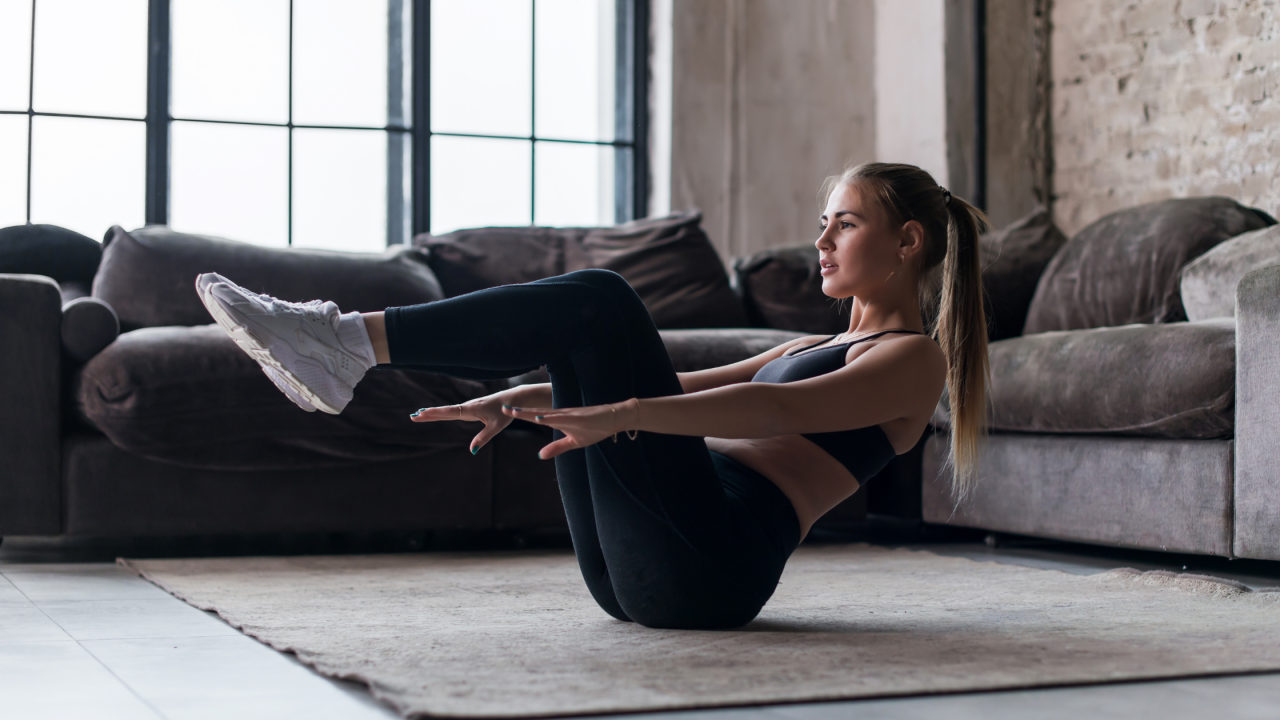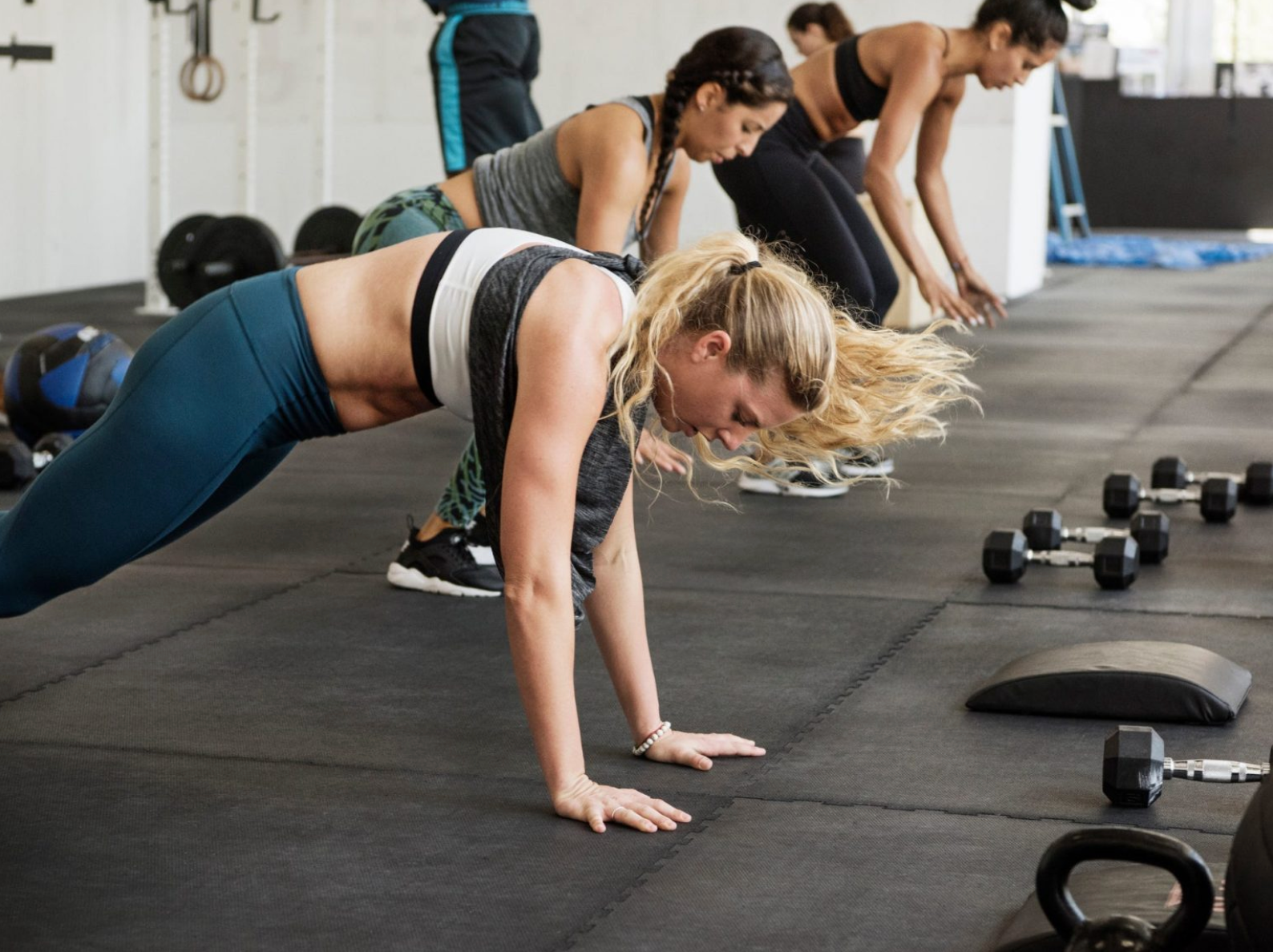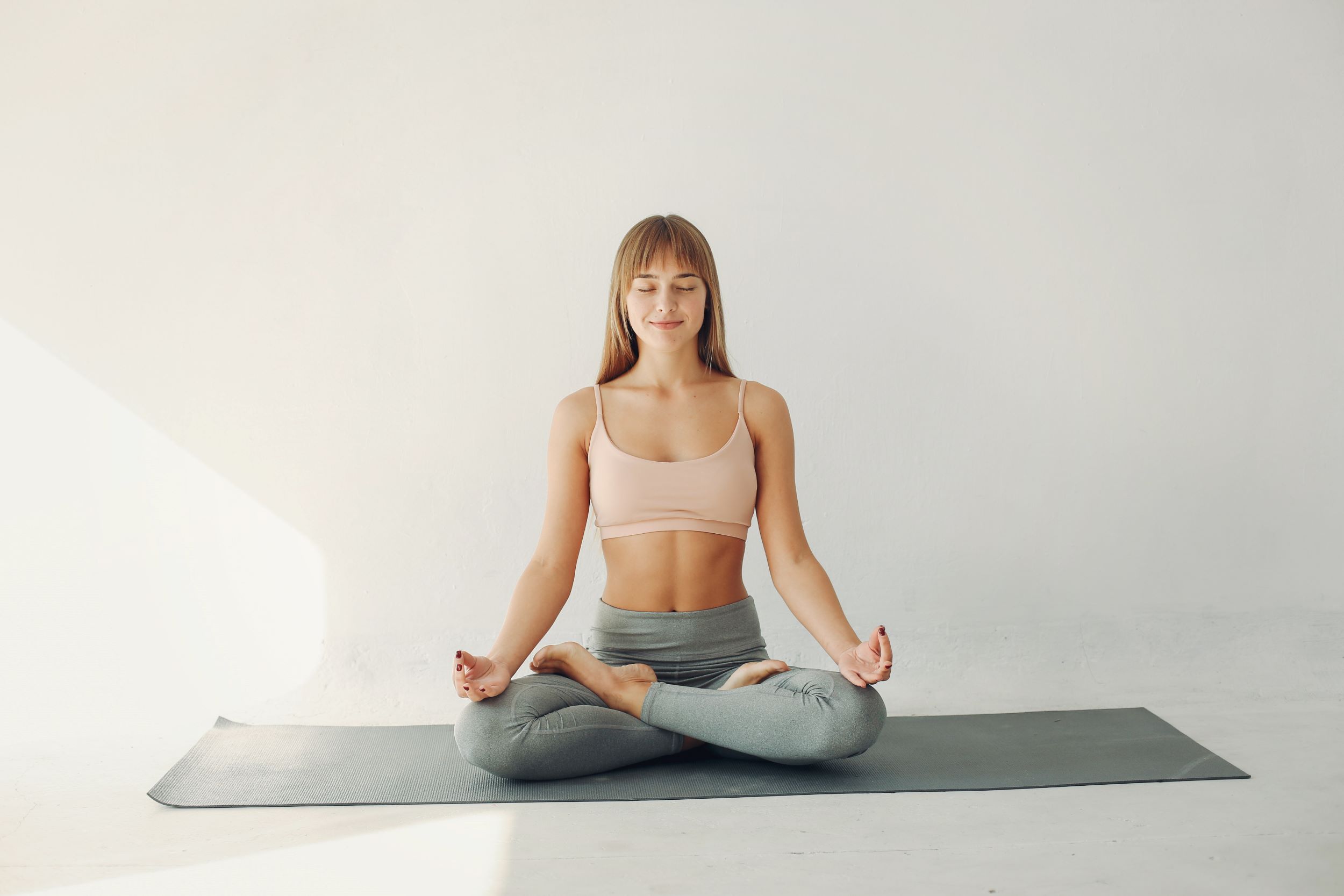Bodyweight exercises are a powerful way to build strength and enhance fitness without needing any equipment. You can train effectively anytime and anywhere, making these exercises incredibly versatile for busy lifestyles. They engage multiple muscle groups, improve balance, and help increase flexibility, making them suitable for anyone from beginners to seasoned athletes.
Learning the proper techniques is crucial in maximizing the benefits of bodyweight training. Knowing how to execute each movement correctly not only helps prevent injuries but also ensures you get the most out of each rep. As you grow stronger, you can progressively increase the difficulty of the exercises, which keeps your workouts challenging and effective.
Getting started is simple. You just need to create a routine that fits your goals and lifestyle. Coupled with proper nutrition and an active lifestyle, bodyweight training can lead to impressive results. You’ll find that consistency is key, and the ability to work out on your terms makes it easier than ever to stay committed.
Key Takeaways
- You can build strength without any equipment using bodyweight exercises.
- Proper technique is essential for maximizing benefits and preventing injuries.
- Creating a routine that fits your lifestyle helps maintain consistency and progress.
Fundamentals of Bodyweight Training
Bodyweight training is an effective way to build strength and endurance without needing a gym. You can use your body weight as resistance to develop muscle mass and improve fitness. This section looks at key elements of bodyweight workouts, their benefits, and essential fitness components.
Understanding Bodyweight Workouts
Bodyweight workouts rely on the weight of your own body to perform exercises. This means you can work out anywhere, making it convenient and accessible. Common exercises include push-ups, squats, pull-ups, and lunges.
To get started, aim for a balanced routine that includes:
- Pushing exercises (e.g., push-ups)
- Pulling exercises (e.g., pull-ups)
- Leg exercises (e.g., squats)
You can progress in difficulty by adding more repetitions or trying advanced variations. This flexibility allows you to tailor workouts based on your fitness level and goals.
Benefits of Strength and Endurance
Bodyweight training is great for building both strength and endurance. Engaging in these workouts can help you burn fat and improve your overall health.
You can expect benefits like:
- Increased muscle mass
- Improved stamina
- Enhanced physical autonomy
As you perform exercises repeatedly, your body adapts and strengthens. This leads to better performance over time. You also engage multiple muscle groups, promoting functional fitness that applies to everyday activities.
Core Elements of Fitness
Incorporating bodyweight exercises into your routine focuses on core fitness elements: strength, endurance, and flexibility.
To create a balanced program, consider including:
- Strength training: Push-ups, squats, and dips
- Endurance workouts: High-rep circuits or timed challenges
- Flexibility work: Stretching routines post-workout
By hitting these core elements, you can develop a well-rounded fitness regime. This approach supports better performance while reducing the risk of injury. Bodyweight training is efficient and effective, allowing for meaningful progress without the need for gym equipment.

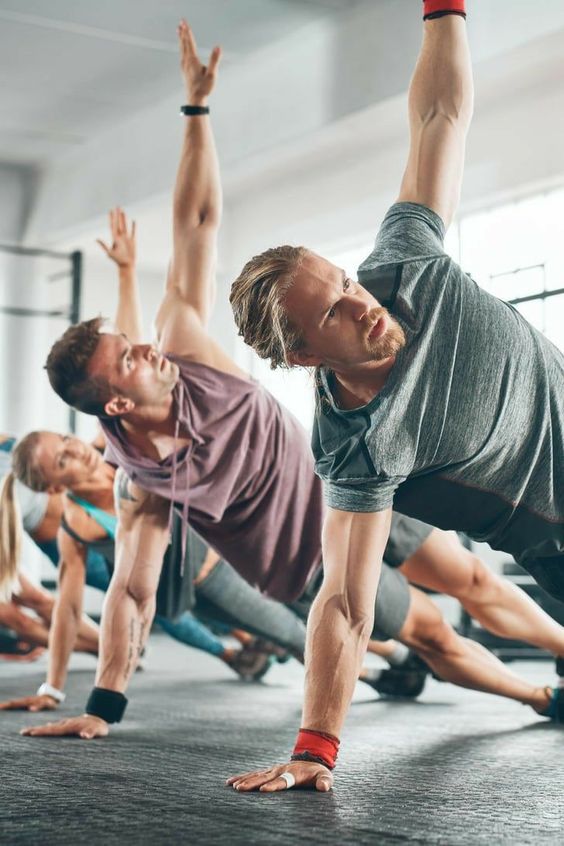
Exercise Techniques and Form
Proper technique and form are crucial for effective bodyweight exercises. Focusing on these aspects helps prevent injury and enhances your workout results. Here’s a closer look at key techniques for upper body, lower body, and core exercises.
Upper Body and Arms
When performing upper body exercises like push-ups and dips, maintaining a neutral spine and proper shoulder position is key. For push-ups, your hands should be shoulder-width apart. Keep your elbows at a 45-degree angle to your body. Lower your chest close to the ground, then push back up without arching your back.
With dips, keep your elbows tucked in while lowering your body. Lower until your elbows are at about a 90-degree angle, then push back up. For pull-ups, grip the bar with palms facing away. Pull up until your chin is above the bar, focusing on engaging your back muscles.
Lower Body and Legs
In lower body exercises such as squats, lunges, and deadlifts, focus on your range of motion and hip alignment. For squats, stand with feet shoulder-width apart. As you lower into the squat, push your hips back and bend your knees while keeping them aligned over your toes. Keep your chest up and back straight.
During lunges, step forward and lower your back knee toward the ground. Ensure your front knee stays above your ankle to avoid strain. In deadlifts, hinge at the hips with a flat back. Lower your upper body while keeping your weights aligned close to your shins. You should feel tension in your hamstrings.
Core and Back
Core exercises like the plank require a strong focus on maintaining body alignment. Start in a plank position with your elbows under your shoulders and your body in a straight line from head to heels. Hold this position while keeping your abs tight to prevent sagging hips or a raised backside.
For back exercises, ensure that you are engaging your lower back and glutes during bodyweight moves. Movements like supermans can help strengthen these areas. Lie face down and lift your arms and legs off the ground simultaneously, squeezing your back muscles as you rise. This builds stability and strength in your core and back.
Progression in Bodyweight Exercises
Progressing in bodyweight exercises is crucial to building strength and improving fitness. You can start with basic movements and gradually move to advanced techniques. Adapting exercises to fit your level helps in effective training.
Beginner Bodyweight Movements
When starting your bodyweight training journey, focus on fundamental exercises. These movements build a strong foundation. Key beginner exercises include:
- Bodyweight Squats: Engage your legs and core.
- Push-ups: Strengthen your chest, shoulders, and triceps.
- Reverse Crunches: Target your abdominal muscles.
Begin with 8-12 repetitions for each exercise. Aim for 2-3 sets. Rest 30-60 seconds between sets. As you get stronger, gradually increase the reps or sets. This solid base will prepare you for more complex movements.
Advanced Techniques
Once you master basic exercises, you can try advanced techniques. These use your body weight to challenge muscles further. Consider these advanced movements:
- Pistol Squats: A single-leg squat that builds strength and balance.
- Archer Push-ups: Involve shifting weight to one side, enhancing arm strength.
- Muscle-ups: Combine pull-ups and dips for a full upper body workout.
Start with a few reps and focus on form. Aim for 3-5 sets. This progression increases your strength, making workouts more effective.
Exercise Adaptations
Adapting exercises to fit your level is essential for growth. For instance, modify push-ups by adjusting your hand placement. Here are some adaptations:
- Knee Push-ups: For beginners needing less intensity.
- Elevated Feet Push-ups: For more challenge, elevate your feet.
- Single-leg Squats: To increase difficulty while maintaining balance.
Listening to your body is vital. If an exercise feels too hard, simplify it. With a 1-on-1 coaching program or during your NF Journey, a coach can provide guidance on suitable adaptations.
Building a Bodyweight Workout Routine
Creating a bodyweight workout routine requires careful planning. You want to ensure you include a warm-up, choose effective exercises, and allow time for rest and recovery. This structure will help maximize your results while minimizing the risk of injury.
Warm-Up and Preparation
Before starting your workout, warming up is essential. A proper warm-up increases your heart rate and prepares your muscles for exercise. Aim for about 5 to 10 minutes of light cardio and dynamic stretches.
Consider exercises like:
- Jumping jacks
- Arm circles
- Leg swings
These movements help to activate major muscle groups. Make sure your body feels ready. Pay attention to any tight areas and adjust your warm-up accordingly. Focusing on flexibility can also enhance your performance.
Constructing a Full-Body Workout
For a balanced bodyweight workout, include exercises that target the major muscle groups: legs, chest, back, arms, and core. Here’s a simple plan:
- Legs: Bodyweight squats and lunges.
- Chest: Push-ups.
- Back: Pull-ups or inverted rows.
- Arms: Dips or close-grip push-ups.
- Core: Plank or reverse crunches.
Try to perform 10 to 15 reps of each exercise. You can arrange them in circuits, completing one after another with minimal rest. This method can build strength and improve endurance. Adjust the intensity based on your fitness level, aiming for 2 to 3 circuits per session.
Incorporating Rest and Recovery
Rest is as crucial as exercise. Give your muscles time to recover to avoid fatigue and injuries. Schedule rest days, especially after intense workouts. It’s vital for muscle growth to allow a break.
During workouts, aim for 30 to 60 seconds of rest between exercises. This keeps your heart rate up while letting you catch your breath. After finishing your routine, do a cool down with gentle stretches to promote flexibility and relaxation. Focus on areas worked during the session to aid in recovery.
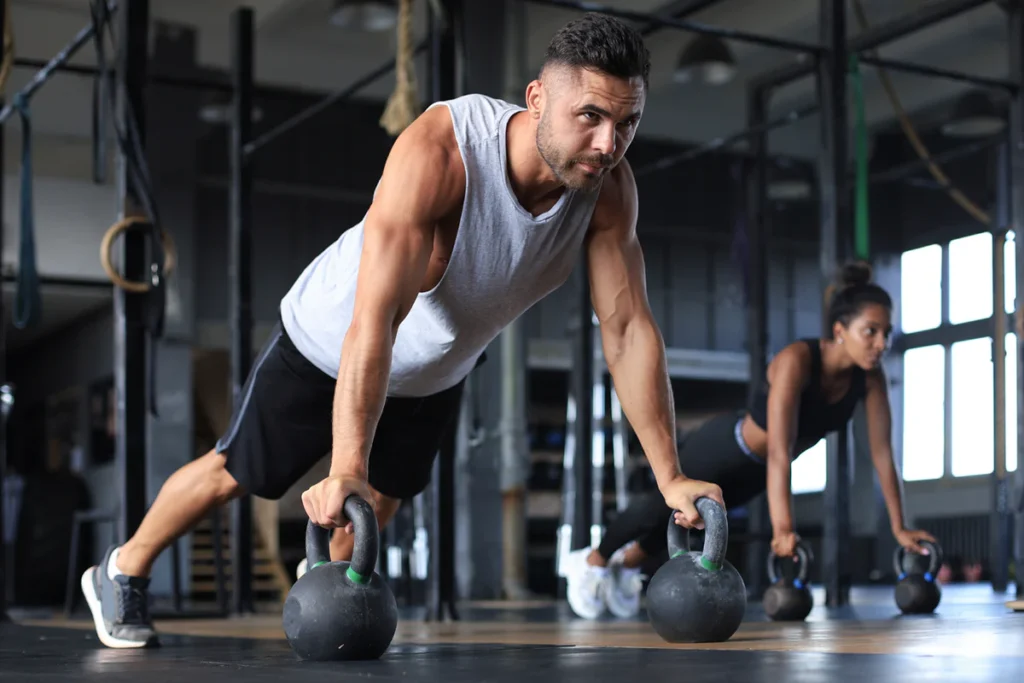
Nutrition and Lifestyle for Optimal Performance
Nutrition and lifestyle choices play a significant role in achieving the best results from bodyweight training. Proper fueling and recovery strategies can enhance your strength gains, support muscle mass, and lower the risk of injury.
Fueling for Bodyweight Training
To train effectively, you need to consume a balanced diet rich in the right nutrients. Aim for approximately 60-70% of your daily calories from carbohydrates. This helps provide the energy needed for intense workouts. Include 10-15% protein to support muscle growth and repair, and 20-30% fats for overall health.
Focus on whole foods like fruits, vegetables, whole grains, lean meats, and healthy fats. Eating a carbohydrate-rich meal 3-4 hours before training can boost your performance. Monitor your protein intake to target around 1.2 to 2.0 grams per kilogram of body weight to enhance muscle mass. Staying hydrated is equally important. Aim for at least half your body weight (in ounces) of water daily to support performance and recovery.
Recovery and Lifestyle Factors
Recovery is just as crucial as training. Along with proper nutrition, sufficient sleep is essential. Aim for 7-9 hours of quality sleep each night to allow your body to repair muscle tissues and regain strength.
Incorporate mobility exercises to enhance flexibility and prevent injuries. This helps improve your range of motion during bodyweight exercises. Consider light activities like walking or yoga on rest days to promote recovery.
Additionally, managing stress through mindfulness practices can positively influence your overall performance. This balance will help you optimize strength and muscle gains while minimizing injury risks.
Frequently Asked Questions
Bodyweight exercises are a versatile way to improve fitness. Here are some common questions regarding their effectiveness, benefits, and recommendations.
What are some effective bodyweight exercises for beginners to start with?
Beginners can try squats, push-ups, and lunges. These exercises target major muscle groups and can be modified to fit your fitness level. Start with a few repetitions and gradually increase as you become stronger.
How can bodyweight exercises be utilized for significant muscle building?
You can build muscle by increasing the number of repetitions and sets. Adding variations, like the one-arm push-up or pistol squats, will challenge your muscles more. Consistency and progressive overload are key to muscle growth.
Can bodyweight exercises contribute to weight loss, and how?
Yes, bodyweight exercises can help with weight loss. They increase your heart rate, which burns calories. By including circuits or high-intensity interval training (HIIT), you can maximize your calorie burn during workouts.
What are the advantages of incorporating bodyweight exercises into a fitness routine?
These exercises require no equipment, making them accessible anywhere. They also improve functional strength, balance, and flexibility. You can easily adjust the intensity to fit your fitness level.
How can one progress in intensity when doing bodyweight workouts?
To increase intensity, try adding more repetitions, reducing rest time, or incorporating advanced variations. You can also perform exercises on unstable surfaces to challenge your stability. Regularly setting new goals will keep the workouts effective.
What bodyweight exercises are recommended for strengthening the back?
Exercises like supermans, planks, and bird-dogs help strengthen the back. Incorporating these movements can improve posture and reduce back pain. Aim for controlled movements to maximize effectiveness and safety.
